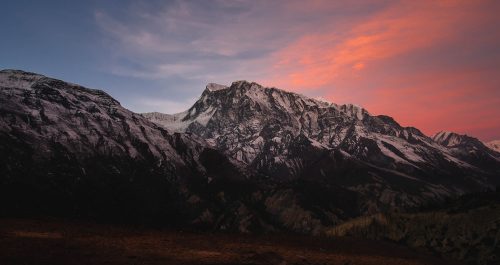Trekking In Nepal

Adventure trekking tourism is the largest industry in Nepal with eight of the top ten highest mountains in the world and some of the most beautiful landscapes which are only reachable foot. Possessing eight of the highest mountains in the world, Nepal is a hotspot destination for mountaineers, rock climbers and people seeking adventure. The Hindu and Buddhist heritage of Nepal and its cool weather are also strong attractions to the visitors. Trekking in Nepal is one of the unique adventure experiences and most popular activity in Nepal. The huge variety of options allows for people of any age and capabilities to attempt a trek in Nepal. While you could spend a year planning an expedition to wild and lofty places that few would dare attempt. The best seasons for the trekking are the dry and warm seasons. March-June and September-November. During the monsoon season, mostly there’s rainfall at night and days are cloudy with less rain. The north side of the Himalayas is n rain shadow, means that the mountains somewhat block the rain.
There are treks suitable for wide range of experience and physical fitness. If you can walk uphill for few hours each day, then you can find a suitable trek in Nepal. A longer trek, crossing high passes and into remote regions demands a higher degree of endurance. The most popular trekking destinations here in Nepal are the Annapurna circuit, Upper mustang trek, Langtang trek, Annapurna base camp trek, Poon hill Ghorepani trek, Everest base camp trek, Gokyo lake trek, Manaslu trek and Langtang trek where one can trek in the comfort of nice and cozy lodges along with amazing views. Some remote corners of Nepal Himalaya which are equally beautiful and famous trekking destinations are Dolpo and Humla region trek including the Kanchenjunga and Makalu trekking.
Guides treks are legally organized by registered trekking agencies. The agencies run regular group treks in the seasons and it’s generally easy to trek. All the necessary trekking gears are carried by the porters. The cook will prepare all the meals during the camping treks. The trekkers only need to carry a small day bag where they can keep their essential stuffs that they need in that day. At night, tents for dining, and sleeping and washing are provided and set up. Mattresses, sleeping bags, tables and seating are arranged by the staffs. For large groups, a Sirdar (chief guide) is employed to pre-arrange and then to oversee the entire program. All land transportation, local permits, taxes, porters insurance, and entrance fees to National Parks or sites that are part of trip are arranged by the agency.



